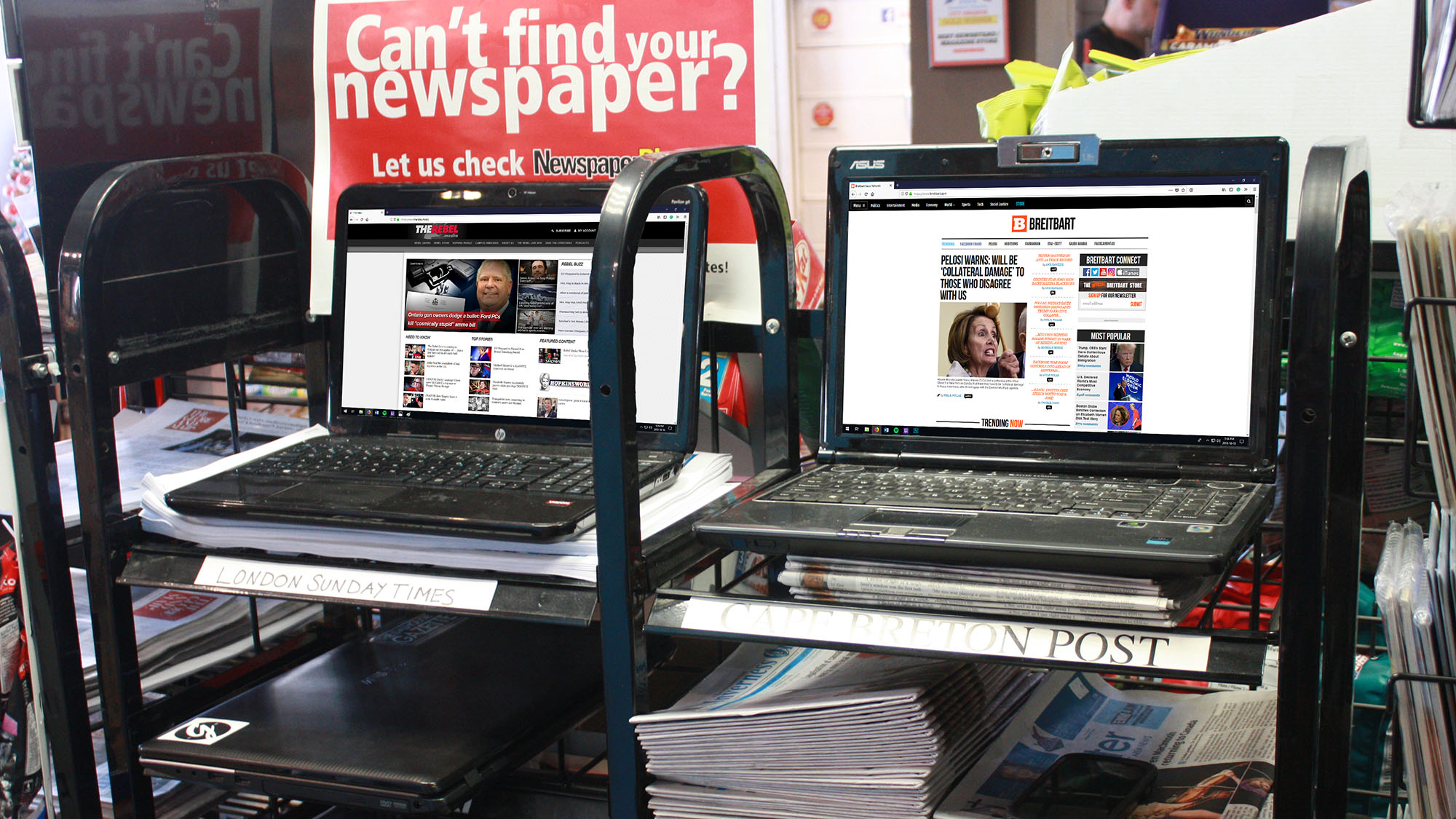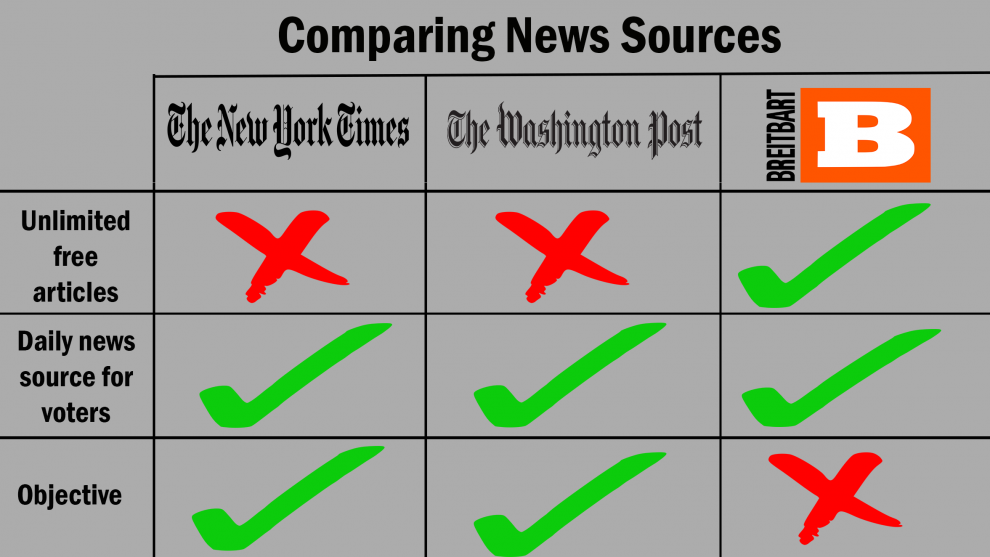The new partisan press

caption
Wether you read on paper or a screen, media is becoming more partisan.We have entered an electronic era of hyperpartisan political information
In 1973, the most notable thing about the Ottawa press gallery office was that it wasn’t notable.
Parliament sat until 10 o’clock at night. Reporters had to stay in the building to get the stories. One night, a press release came to the office, and a Canadian Press reporter noticed it seemed to be missing a line. It was late, but she called the office of the minister to flesh out the story. Marc Lalonde, the minister at the time, answered the phone.
“Well, I’m the minister, I guess I should be able to answer your question, but I don’t have the information,” said Lalonde. He looked up the information and passed it on. Lalonde was annoyed by the call – not because a journalist reached him, but because the press release was missing information that should have been included.
The most remarkable part of that evening was the view of the Ottawa River. The most remarkable part of that story today is that a minister answered the phone.
Reporting on politics has changed drastically since then. Reporting on policy remains complex, but the speed with which information travels, and the ability for anyone to have a website or Twitter account, means there has been a shift in political reporting.
“You can go to any website you want to and get what you agree with,” says Brian Gabrial, professor emeritus of journalism history at Concordia. “Just like in the 1800s you could find a newspaper you agreed with.”
Journalists today must carve out a market for themselves in the age of the new electronic partisan press.
Brief History
The printing press came to Nova Scotia in 1751. In a small shop on Grafton Street, John Bushnell on March 23, 1752 printed the first issue of the Halifax Gazette. He set the copy in Caslon type, smoothed and applied the ink, pressed the damp pages and let them dry. It was time-consuming and expensive work; debt dogged Bushnell’s life in Halifax.
When the industry first started, printers created newspapers. These men relied on what business came to them. Advertising helped keep the candles lit, but the main source of income was government subsidies and printing government content. Printers sometimes had owners who were politicians.
The business model of the press in the early days looked like the business model of the marketing companies involved in the Liberal sponsorship scandal. Except that it wasn’t a scandal, just how business was done. It was the era of the partisan press.
The Internet has created a new partisan press. Bulky, clunky printing presses are no longer required to share information. To create and share information today requires a cell phone, some free time and a bit of WiFi. Anyone can create a Twitter account, Facebook page or YouTube channel. Having a website costs less than $20 a month.
Electronic platforms have replaced paper. Online it’s harder to tell what is news and what is partisan. A well-made website gives even the craziest ideas a veneer of legitimacy. Anyone with an Internet connection can find whatever information they desire. If someone wants fact-driven, unbiased reporting, they can get it. If they want fact-flexible, biased reporting to confirm a belief they have, well, they can get that too.
Political Advantage
Michelle Rempel is sitting on the floor in front of a couch. She looks down at her lap, sighs and then looks into the camera before speaking. She’s making a video for her YouTube channel. Her YouTube channel has 20,000 followers. The National Post has 22,000.
Politicians used to rely on journalists to get their message out. Granting interviews, appearing on talk shows, message discipline, giving information on background – aka leaking – were the tools politicians relied on to be heard and understood. How the message was received and told was at the discretion of the journalist.
Things have changed. “I now also have a direct platform to the public that I didn’t have when I was first elected,” says Rempel, M.P. for Calgary-Nose Hill.
Creating content for a platform, and the need to control the message, is part of the reason the communications profession has exploded. According to Statistics Canada, in 1991 there were 23,780 communications professionals in Canada. In 2011, when Rempel was first elected, there were 54,605. In 2017, there were 131,900.
Shrinking news
In June 2016 the House of Commons committee on Canadian Heritage issued a report analyzing the decline of traditional print journalism in the digital age. The report laments that the lack of local news is having a “negative impact on democracy.”
Local news is shrinking. “When I first started, the Amherst Daily News had a standalone building and 40 employees,” says Bill Casey, M.P. for Cumberland-Colchester. “The Amherst News now has two people.” Both reporters work from home.
The major newspapers face similar challenges. In January 2016, Postmedia Network Canada Corp. announced it was combining newsrooms in major markets, shedding 90 jobs. Its main paper, the National Post, chides users to turn off their ad blockers. The Globe and Mail and the Toronto Star have paywalls. According to the Financial Post, the Star is moving to a subscription model because the model has been successful in – and revitalized – other industries.
“There is one beautiful thing that is so exciting,” says Tom Korski, managing editor of Blacklock’s Reporter. “If you are a document-driven reporter – that’s a big if – this is a golden age.”
When crisis strikes a government, there is a flurry of activity. Staffers send emails on BlackBerrys while absently staring at the report on TV. Politicians type emails with the story open in another tab. These emails talk about how to handle the crisis. Thanks to the Access to Information Act passed in 1985, reporters like Korski can get those emails. It’s like he’s reading over the shoulders of the people in power as they write their emails – and taking notes.
“For the first time in history,” Korski says, “it’s possible to see the inner thoughts of these people as they waste your money and lurch from one crisis to another.”
Niche or in-depth, subscription-funded journalism is thriving with the Internet. Businesses and other decision-makers are willing to pay for the reporting Korski is doing. Blacklock’s Reporter has been in business for six years and hasn’t lost money. Locally, All Nova Scotia has been in business 17 years and continues to grow. It now has nearly 11,000 subscribers.
Price of free
There’s a truism on the Internet: If you aren’t paying for a product, then you are the product. When it comes to news, there are those who don’t want to or can’t pay. In the market of free information, outlets are filling people’s need to be informed. But these free, or mostly free outlets, like the Rebel and Breitbart and the Ontario/BC Proud Facebook pages exist to politicize. People can get the information they want, told in a way they agree with, for free. If they’re getting what they want why would they pay for quality journalism? Why would journalism, succeeding behind a paywall, change its business model to compete with the Rebel?
As quality journalism starts moving behind paywalls, there is a concern that people who don’t or can’t pay for it become less informed, which can hurt our democracy. For Korski, this is not important. “If university professors and people who wear bowties want to talk about democracy – god bless them.” If a story plays well with his subscribers, he says, that’s good enough.
Journalism is “constantly looking at itself and constantly trying to re-evaluate its purpose and trying to perform a public service,” says Concordia professor Gabrial. Self-reflection gave journalism its professional ethos of objectivity and telling all sides of a story. Self-reflection caused the move away from the partisan press into what we would recognize today as legacy media. He’s optimistic about the future of journalism.
Journalism can thrive in this new landscape. Journalists still spend their days uncovering information and holding power to account. Ultimately, the choice brought on by the digital age might not be a journalism issue.
In a time when anyone can have a platform, media literacy is vitally important. We “need to start thinking about how we educate our children in an era where everyone is a content creator,” says Conservative M.P. Rempel. If the number of high school acquaintances sharing partisan information or outright hoaxes on Facebook is any indication, we may already be in trouble.
The problem becomes what happens when too many people stop reading quality reporting. If people start reading the partisan press, and that erodes media literacy and polarizes the country, it is no longer just a journalism problem. It’s a political problem.



D
Duncan Floyd
m
media lit
R
Robert Leonard
E
Elizabeth Nickson